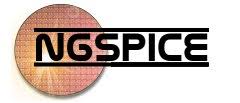Ngspice in Power Electronics Design and Control Systems: A Comprehensive White Paper
Executive Summary
Ngspice is a powerful, open-source SPICE-based circuit simulator widely utilized in power electronics and control systems design. Its capabilities in modeling, simulation, and analysis make it an invaluable tool for engineers and researchers aiming to develop efficient and reliable electronic systems. This white paper explores Ngspice’s features, applications, integration with design tools, use cases, and how IAS-Research.com can empower teams through expert guidance and R&D support.
1. Introduction to Ngspice
Ngspice is an open-source circuit simulator derived from the SPICE program developed at UC Berkeley. It allows the simulation of analog, digital, and mixed-signal circuits by solving the mathematical equations governing voltage, current, and time-dependent behaviors. This makes it a crucial tool in power electronics design and embedded control systems.
2. Applications in Power Electronics Design
Ngspice supports a range of simulations essential for the design of modern power electronic systems:
2.1 DC-DC Converters
- Simulate non-isolated converters (buck, boost, buck-boost)
- Evaluate duty cycles, ripple voltage, and transient behavior
2.2 AC-DC and DC-AC Converters
- Full-bridge and half-bridge topologies
- Power factor correction and harmonic analysis
2.3 Power Inverters
- Single and three-phase inverter modeling
- Ideal for motor drive systems and solar inverters
2.4 Power Amplifiers
- Efficiency and distortion analysis
- Electro-thermal effects on power transistors
3. Applications in Control Systems
Ngspice plays a significant role in the design and validation of control systems that manage power electronic converters:
3.1 Feedback and Stability
- Simulate Bode plots, Nyquist, and root locus analysis
- Time-domain analysis for overshoot, settling time
3.2 Controller Design
- Integrate and tune PID and PI controllers
- Analyze control loop response with varying system loads
3.3 Digital Control with Analog Interfaces
- Combine microcontroller DAC/ADC circuits with analog plant models
- Perform mixed-signal simulation (Verilog-A + Ngspice)
4. Integration with Design Tools
Ngspice is compatible with modern open-source EDA platforms and modeling frameworks:
- KiCad: Enables schematic capture, layout, and inbuilt simulation
- LTspice-to-Ngspice Conversion: Use vendor libraries from Analog Devices or TI
- Isotel MixedSim: Combine Ngspice with Verilog simulation for embedded control validation
- Python Interfaces: Use PySpice or Ngspice shared libraries for co-simulation and batch processing
5. Real-World Use Cases
Case Study 1: Renewable Energy Boost Converter
A startup used Ngspice to simulate and optimize a boost converter for a solar energy harvesting system, improving efficiency by 12%.
Case Study 2: Motor Drive Control
Ngspice helped design a vector-controlled inverter for an industrial motor, enabling performance testing before firmware development.
Case Study 3: Mixed-Signal Simulation
Researchers used Ngspice and Verilog integration to test a closed-loop digitally controlled LED driver with dimming and fault detection.
6. How IAS-Research.com Can Help
IAS-Research.com is a center of excellence in engineering design, simulation, and advanced analytics. The organization offers the following support to businesses, universities, and startups working with power electronics and control systems:
6.1 Simulation Consulting and Optimization
- Design reviews and performance optimization of power converters
- Electro-thermal simulations to ensure thermal safety and reliability
- Integration of Ngspice models into EDA workflows (e.g., KiCad or Altium setups)
6.2 Training and Capability Building
- Hands-on workshops on Ngspice for engineers and faculty
- Advanced modules on modeling switching devices and controllers
- R&D training on co-simulation with MATLAB/Simulink, Verilog, and Python
6.3 Custom Model Development
- Development of custom semiconductor models (IGBTs, GaN, SiC)
- Simulation blocks for EMI, switching loss, and soft-start mechanisms
- Verilog-A modeling for integrating with IC-level design flows
6.4 Embedded System Integration
- Co-simulation environments combining firmware and analog circuitry
- Support for rapid prototyping of control algorithms using Ngspice + MicroPython
6.5 Collaborative R&D and Prototyping
- Joint development of simulation models for clients building advanced power systems
- Support for grant applications and innovation funding (academic & SME)
6.6 Digital Twin and System Validation
- Build physics-based simulation models for predictive maintenance and diagnostics
- Ngspice-driven digital twin models for inverters, battery chargers, and smart grid components
7. Advantages of Using Ngspice
- Open-Source and Extensible
- Cross-Platform and Scriptable
- Vast Community Support
- Easy Integration with EDA and Programming Ecosystems
8. Conclusion
Ngspice remains a vital tool in modern power electronics and control system engineering. From early-stage simulations to production-level prototyping, it offers cost-effective, high-accuracy modeling options. Partnering with IAS-Research.com can amplify these benefits by offering domain expertise, simulation know-how, and technical R&D collaboration tailored to industry needs.
References
- Ngspice Official Website: https://ngspice.sourceforge.io
- Ngspice Tutorial: https://ngspice.sourceforge.io/ngspice-tutorial.html
- Ngspice-KiCad Integration: https://ngspice.sourceforge.io/tutorials.html
- Electrothermal Modeling Tutorial: https://ngspice.sourceforge.io/ngspice-electrothermal-tutorial.html
- MixedSim Project (Ngspice + Verilog): http://www.isotel.eu/mixedsim/index.html
- KiCad Forum Simulation Examples: https://forum.kicad.info/t/simulation-examples-for-kicad8-eeschema-ngspice/45546



